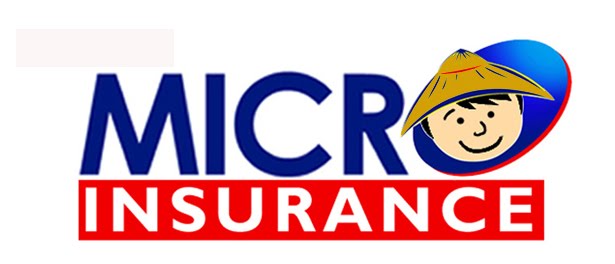BusinessWorld
Finance
Posted on December 03, 2013 09:29:23 PM
MORE THAN a third of microfinance clients are estimated to have been affected by typhoon Yolanda (international name: Haiyan), which battered central Philippines last month, data from the Bangko Sentral ng Pilipinas (BSP) showed.
“For the areas of Samar, Leyte, Panay Islands, Mindoro, Negros and Northern Cebu, the 10 largest microfinance NGOs (non-government organization) in these areas estimated that about 392,000 of their clients were affected by typhoon Yolanda,” Pia Roman-Tayag, BSP head for financial inclusion, said in a speech at the 2013 Citi Microentrepreneurship Awards (CMA) yesterday.
She added that the estimates still lack reports from two big microfinance institutions (MFI) that are still in the process of assessing the damage caused by the typhoon, said to be one of the world’s worst to make landfall.
There are 1 million microfinance clients in the country with loans amounting to P8 billion in the first semester, according to BSP data.
Microfinance savings reached P8.9 billion as of June, higher than the P8.22 billion posted in the same period last year.
Ms. Roman-Tayag said majority of the 10 banks with operations in Leyte and Samar have resumed their operations, but those with limited access to power have cut their operating hours.
“The MFIs have been very quick to respond to the needs of their clients, providing support to those who have lost their homes to even counselling to those affected by the typhoon,” she cited.
“Some of the MFIs and banks used their other branches to service clients in nearby areas. Others have partnered with financial institutions who were able to resume operations earlier,” she added.
Moving forward, Ms. Roman-Tayag said MFIs are already thinking of new offerings to meet the needs of their market in the aftermath of typhoon Yolanda.
FASTER CLAIMS RELEASE
Meanwhile, the Insurance Commission (IC) has launched a program to expedite the processing and release of claims for typhoon survivors.
The Department of Finance said in a statement yesterday that the IC, together with industry players, has unveiled the “Agarang Proseso, Benepisyo ay Sigurado” program to provide faster insurance relief to those affected by the disaster in the Visayas.
Under the program, insurers will establish on-site action centers in the affected areas for policyholders to file their claims.
Life insurer CLIMBS General Life and Insurance Cooperative already put up claims centers in the cities of Tacloban, Ormoc and Cebu. Two more will be set up in Tacloban -- which bore the brunt of the storm -- on Dec. 8 and 13.
Non-life insurers, meanwhile, will deploy personnel to strategic areas in the Visayas this week to further speed up the processing and release of claims.
As of yesterday, typhoon Yolanda has left 5,680 individuals dead, 26,233 injured and more than 11.2 million affected.
The cost of damage in agriculture and infrastructure was pegged at P34.367 billion, and nearly 1.2 million houses have been destroyed, government data showed.
Total insured losses have yet to be determined, Insurance Commissioner Emmanuel F. Dooc earlier said but he warned: “Based on the initial reports, we are quite certain that losses will be very substantial.”
According to the IC, microinsurers have already released P85.132 million to insured fisherfolk, farmers, vendors and members of the marginalized sector in the cities of Tacloban and Ormoc, as well as other affected areas in the Visayas.
Broken down, releases for non-life claims reached P83.641 million, while death claims amounted to P811,000 and and relief assistance, P680,000.
Microinsurers have also approved another P110 million worth of claims to be released to over 19,000 claimants.
Moreover, the IC has requested insurers to “process and release payments to the affected insuring public without the necessity of an actual claim filed before them.”
It is also considering the possibility of requiring insurance providers to release claims even without the traditional documentary proof and notices of loss.
Satellite imaging and crisis mapping could be used as the basis for the payment of property insurance proceeds, the regulator said. -- Ann Rozainne R. Gregorio and Diana Jean B. Evite
Finance
Posted on December 03, 2013 09:29:23 PM
MORE THAN a third of microfinance clients are estimated to have been affected by typhoon Yolanda (international name: Haiyan), which battered central Philippines last month, data from the Bangko Sentral ng Pilipinas (BSP) showed.
“For the areas of Samar, Leyte, Panay Islands, Mindoro, Negros and Northern Cebu, the 10 largest microfinance NGOs (non-government organization) in these areas estimated that about 392,000 of their clients were affected by typhoon Yolanda,” Pia Roman-Tayag, BSP head for financial inclusion, said in a speech at the 2013 Citi Microentrepreneurship Awards (CMA) yesterday.
She added that the estimates still lack reports from two big microfinance institutions (MFI) that are still in the process of assessing the damage caused by the typhoon, said to be one of the world’s worst to make landfall.
There are 1 million microfinance clients in the country with loans amounting to P8 billion in the first semester, according to BSP data.
Microfinance savings reached P8.9 billion as of June, higher than the P8.22 billion posted in the same period last year.
Ms. Roman-Tayag said majority of the 10 banks with operations in Leyte and Samar have resumed their operations, but those with limited access to power have cut their operating hours.
“The MFIs have been very quick to respond to the needs of their clients, providing support to those who have lost their homes to even counselling to those affected by the typhoon,” she cited.
“Some of the MFIs and banks used their other branches to service clients in nearby areas. Others have partnered with financial institutions who were able to resume operations earlier,” she added.
Moving forward, Ms. Roman-Tayag said MFIs are already thinking of new offerings to meet the needs of their market in the aftermath of typhoon Yolanda.
FASTER CLAIMS RELEASE
Meanwhile, the Insurance Commission (IC) has launched a program to expedite the processing and release of claims for typhoon survivors.
The Department of Finance said in a statement yesterday that the IC, together with industry players, has unveiled the “Agarang Proseso, Benepisyo ay Sigurado” program to provide faster insurance relief to those affected by the disaster in the Visayas.
Under the program, insurers will establish on-site action centers in the affected areas for policyholders to file their claims.
Life insurer CLIMBS General Life and Insurance Cooperative already put up claims centers in the cities of Tacloban, Ormoc and Cebu. Two more will be set up in Tacloban -- which bore the brunt of the storm -- on Dec. 8 and 13.
Non-life insurers, meanwhile, will deploy personnel to strategic areas in the Visayas this week to further speed up the processing and release of claims.
As of yesterday, typhoon Yolanda has left 5,680 individuals dead, 26,233 injured and more than 11.2 million affected.
The cost of damage in agriculture and infrastructure was pegged at P34.367 billion, and nearly 1.2 million houses have been destroyed, government data showed.
Total insured losses have yet to be determined, Insurance Commissioner Emmanuel F. Dooc earlier said but he warned: “Based on the initial reports, we are quite certain that losses will be very substantial.”
According to the IC, microinsurers have already released P85.132 million to insured fisherfolk, farmers, vendors and members of the marginalized sector in the cities of Tacloban and Ormoc, as well as other affected areas in the Visayas.
Broken down, releases for non-life claims reached P83.641 million, while death claims amounted to P811,000 and and relief assistance, P680,000.
Microinsurers have also approved another P110 million worth of claims to be released to over 19,000 claimants.
Moreover, the IC has requested insurers to “process and release payments to the affected insuring public without the necessity of an actual claim filed before them.”
It is also considering the possibility of requiring insurance providers to release claims even without the traditional documentary proof and notices of loss.
Satellite imaging and crisis mapping could be used as the basis for the payment of property insurance proceeds, the regulator said. -- Ann Rozainne R. Gregorio and Diana Jean B. Evite








